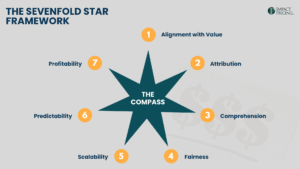You can listen to the full audio version of this blog we call — Blogcast.
When most companies talk about “market segments,” they really mean industries: aerospace, automotive, healthcare, etc.
That’s easy, but it’s wrong.
Industries are proxies, not segments.
Real segmentation happens at the level of the Foundational Problem the buyer is trying to solve.
Here’s why it matters: An aerospace engineer and an automotive engineer might buy a 3D printer for entirely different reasons. Or they might buy for the same reason (rapid prototyping), even though they come from different industries.
The problem they’re solving, not the industry they’re in, defines their product needs and willingness to pay.
If you want to design better product portfolios, better pricing strategies, and better marketing, you must segment by Foundational Problems, not verticals. Foundational Problems are only one context to consider (the most important one, though) when designing your products and go-to-market plans.
I use three layers to understand buyer context:
- Foundational Problem: What major business challenge is driving them into the market?
- Problem Scope: How big, complex, or specialized is their need?
- Urgency Context: How fast and under what pressure do they need to solve it?
When you align your products, marketing, sales, and pricing to these layers of buyer context, everything gets easier and more profitable.
Stop segmenting by industry. Start segmenting by problem. More details on this concept will come out in my forthcoming book: Context-Driven Pricing. I can’t wait to share it with you.
Share your comments on the LinkedIn post.
Now go make an impact!
 Tags: market segments, pricing, pricing foundations, pricing metrics, pricing skills, pricing value, value, value-based pricing
Tags: market segments, pricing, pricing foundations, pricing metrics, pricing skills, pricing value, value, value-based pricing













